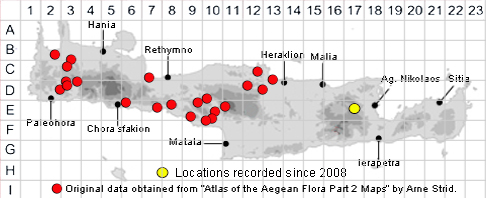
LUPINUS PILOSUS
Family and Genus:- See- LEGUMINOSAE
Common Names:- None
Homotypic Synonyms:- None
Meaning:- Lupinus. The ancient Latin name for the white lupin.
Pilosus (L) Covered with soft distinct hairs.
General description:- Silky or hairy annual.
Stems:-
1) Up to 50 cm. hirsute.
Leaves:-
1) Leaflets, 25-35 x 6-9 mm, oblong-obovate, mucronulate, sericeous to softly
villous, hairs white.
2) Stipules, linear-subulate.
Flowers:-
1) Racemes, up to 10 cm; flowers irregularly verticillate.
2) Peduncle, 1-4 cm.
3) Calyx, hirsute,
a) upper lip, c. 8 mm, 2-partite.
b) lower, 10-12 mm, shallowly 3-dentate to subentire.
4) Corolla, 15-17 mm, bright blue or often particoloured.
a) standard, with a white and yellow or pale purple blotch.
b) wings, blue.
c) keel, white.
Fruit:-
1) Legume, 40-50 x 13-20 mm, softly hirsute, dark red-brown.
2) Seeds, 3-4, orbicular, compressed, tuberculate-scabrid, iridescent, brown and
black-marbled on cream and purple, with a black, curved line on each side.
Key features:-
1) Corolla, 15-20 mm.
2) Seeds 9-12 mm in diam
Habitat:- Dry open shrubby vegetation, roadsides, olive groves, dry streambeds
generally in light sandy soil. 0-800 m.
Distribution:- Greece and the Aegean region. Mainly confined to W. and C. Crete.
Flowering time:- Late Mar to May.
Photos by:- Steve Lenton
SPECIES DESCRIPTION
